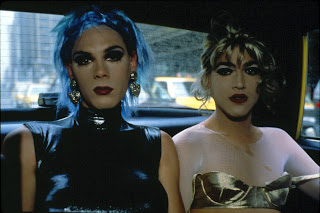Alec (and Carmen) Soth
from "Brighton Picture Hunt"
This image is credited to photographer Alec Soth, but it was actually taken by his seven-year-old daughter Carmen. When Soth arrived in England to work on a commissioned photo-shoot in early 2010, he was denied a work visa. The photographer was told that he would be allowed into the country only under the stipulation that, were he to be caught taking photographs, he would be arrested. In response, Soth gave his camera to Carmen, and allowed her to photograph anything she found interesting. He was interested in his daughter's "open-eyed" view of the world, her lack of inhibitions, and her work, untainted by knowledge of photographic cliches.
I chose the image of a woman walking down the street, not paying attention to the photographer (Carmen), because I think it represents the overall theme of the work that Alec Soth was trying to portray. The woman in the photograph completely ignores the photographer, looking over her, focused on her path ahead. Had the photographer been the elder Soth, the attitude of the subject may have changed greatly. A child taking a photograph is innocent, the subject can assume that there is no possibility of being subjected to a photographer's agenda. This also highlights the concept the reality of documentary photography; how real is the expression of a subject that is being watched? How does the presence of a photographer influence the subject matter?
Technically, the image is strong (especially when you consider that it was taken by a child with no formal training). The woman's head and torso are framed in the center, making her expression the focal point. The image is evenly exposed for both the sky in the background, and the woman. The depth of field is shallow, falling off right behind the woman. Overall, this image is interesting because it illustrates the importance of context and intent in photography. The story behind the image elevates it beyond the snap-shot that it is in reality.















